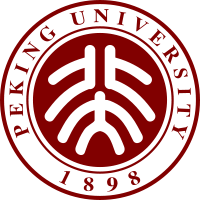Well I am looking forward with anticipation to a conference here in Beijing that begins this evening. Now I didn’t exactly count on clean air in Beijing – but I didn’t expect the most unbelievable dirty air I’ve ever seen. It is hard to believe that China’s leaders – who live in this sprawling capital – wouldn’t pull out all the stops to work on pollution reduction here and in all the very polluted cities across the nation after this weekend of dirty dangerous air in the nation’s capital.
Anyway back to the conference. This is a Harvard University (The Kennedy School and the Belfer and Ash Centers) and the Institute of China-US People to People Exchange, Peking University. This is the latest in a series of encounters between experts from the US and from China – with one thrown in from Canada – me – concerned with the US-China relationship. The subtitle of the conference tells it all: “How Can Rising China and Adjusting US Manage Their Relations and Deal with Global Challenges?”
In preparation some of my Harvard and Princeton colleagues prepared a series of memorandum on the relationship. A particularly interesting piece was prepared by Charles Maier “Ambiguous Lessons from History”. Charlie’s principal point is that while there is something he, and others call a “Thucydean Model” – where a rising power raises fears in the hegemonic power. The growth of the new power, in this model, makes war inevitable. Charlie acknowledges the hegemonic war thesis but suggests that it is in fact the entangling alliances that leads to the prospect of war between these powers. As Charlie argues:
They were locked into a logic of bipolar rivalry such that implicitly any change in the balance of power or the “corollary of forces” must have appeared a threat to both sides.
It is this structural feature – alliance loss or gain, rather than misperceptions that led to conflict – or as he says “they arose from the geometry of the overall situation.”
What this in turn suggests is a need for analysts to examine the properties of the international/regional context to determine the shift to a form of balance of power and away from the previous hegemony. This is an examination undertaken by, among others, our colleague John Ikenberry from Princeton who urges us in “Source of Order and Great Power Restraint in East Asia” to look at: “What are the sources of great power restraint in a region that is increasingly less defined by America’s hegemonic presence?” Now John raises the possibility of a turn to a balance of power, though he suggests that this is not what has yet occurred. It is instead a “partial balance of power order.”
But a look at the regional and global dynamics of East and Southeast Asia seem to me to suggest something very different. Probably the best short examination is that proposed very recently in the EastAsiaForum by Don Emmerson an Asian specialist from Stanford University who heads the Southeast Asia Forum in the Shorenstein Asia-Pacific Research Center at Stanford University. Applying a lens that includes ASEAN and economic relationships puts a rather different spin on the evolution of relationships in the region. In my remarks I will focus on the many FTAs including in particular the EU initiatives in Asia. But more on that soon.
Credit Image: Peking University


